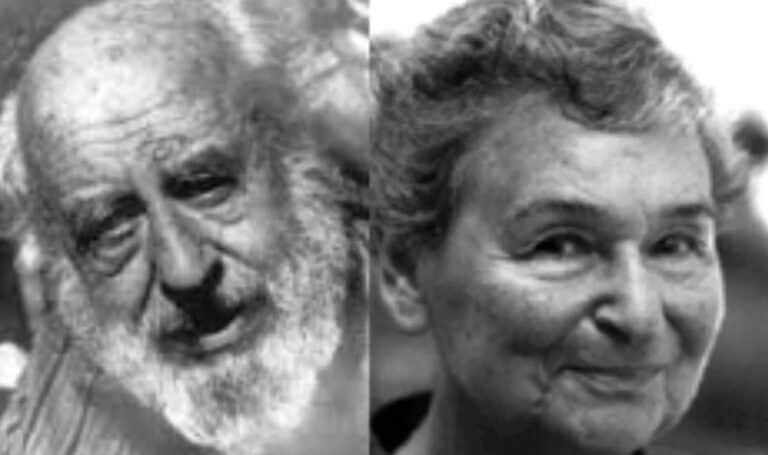Gestalt Therapy Techniques: A Brief Review
If you Need Help
We offer a free online or phone consultation! Let us help you identify your needs and develop a plan to get you back on track.
When discussing the gestalt therapy technique, it’s important to understand that it is rooted in the common belief that all people have problems. Gestalt therapists believe this happens because of the individual’s unawareness of their own feelings, bodies, and other people.
In this article, we will dive deeper into some of the main ideas behind gestalt therapy. How and why therapists use it to help people during therapy sessions. Along with some of the possible benefits of using this type of therapy as well as some of the potential drawbacks that should be considered.
What is gestalt therapy?
Gestalt therapy is a unique approach used by psychologists to help individuals reach balanced and integrated wholeness. Through the therapeutic process applied within Gestalt sessions, clients become aware of both their inner feelings and awareness of others around them. This practice encourages people to recognize where they may have holes in understanding themselves, such as emotions or physical sensations, that helps to bring peace into their lives that was missing before participating.
Some of the techniques used in this form of therapy include Body Awareness, Experimentation, Role Playing, The Empty Chair Technique, Dream work, Psychodrama, Group Work (Group Settings), and Language Modification. These techniques are modified for the individual to suit their needs. These techniques have been shown to be most effective with people who are overly socialized and considered rigid. However, this therapy can be used with many types of people. Other common types of people benefitting from this type of therapy are those struggling with understanding their own needs and emotions, lack self-awareness, and are unable to express themselves properly.
It’s important to note that not everyone has the same experience with this form of therapy, as each individual may have a different experience depending on their needs, goals, and other variables. The most important thing to keep in mind is that the process is meant to be a journey of self-discovery and growth. This can be a very rewarding experience for the individual, but it takes patience.
Gestalt Therapist | Frisco, TX

MS, LPCC, LPC, NCC
Therapist | Licensed Professional Clinical Counselor | Nationally Certified Counselor
With over 15 years of experience in supporting individuals who have faced challenges such as bipolar disorder and PTSD, I offer profound expertise and empathy as a committed Gestalt therapist. My mission is to facilitate healing from these conditions and help individuals reach their personal growth objectives. By adapting my Gestalt therapy approach to each person’s distinct needs, I concentrate on fostering trust, resilience, and emotional intelligence, providing you with the resources to navigate the intricacies of recovery from bipolar disorder or PTSD and develop a stronger, healthier mindset. Please don’t hesitate to contact me today to schedule your initial session and begin your journey towards a brighter, more empowered future.
Megan is fully licensed in both Minnesota and Texas. NorthStar Counseling & Therapy can be found at 2591 Dallas Parkway, Suite 300, in Frisco, TX.
Who developed gestalt theory?

Gestalt therapy was developed by Fritz and Laura Perls in the 1940s, is a humanistic form of psychotherapy focused on awareness, contact, and the acceptance of polarities. Its purpose is to provide an individual with a sense of support. Then they will be able to enhance their ability to further develop self-awareness and personal growth.
Gestalt therapy is a form of therapy where the therapists provide support by enriching activities, such as questioning and supporting self-observations. These help individuals in counseling to explore limiting beliefs or behaviors holding them back from living authentically, allowing them to gain awareness of themselves. By exploring boundaries without judgment or expectations, practitioners can use the therapeutic environment to bring an heightened awareness of their current reality. The goals of gestalt therapy are ultimately grounded on strengthening self-acceptance by providing access to meaningful experiences that empower an individual’s truth.
The fundamental elements of this therapy include awareness, contact, polarities, boundaries and support as well as interference in psychological issues.
Awareness
Awarenessconsidered the key to positive change and growth in an individual’s life. Clarkson and Machewn, 1993, say awareness is; “The capacity to be in touch with your own existence, to notice what is happening around or inside you. To connect with the environment, other people and yourself and to know what you are feeling, sensing or thinking. How you are reacting at this very moment” (Day, 2007).
Polarities
Polarities refer to the division of experience into two contrasting or opposite parts. It is an ability to be able to recognize and accept both sides of a situation. This is done in order to gain an understanding of your own personal values and beliefs. Also you will gain the motivations behind other people’s behavior.
Refer to the ability to identify and stop unhealthy patterns of thinking or behavior which interfere with your well-being. These unhealthy patterns can be due to external situations, relationships, or internal processes such as self-criticism or overthinking. It is important to develop strategies for dealing with these tendencies so that they do not become a problem.
What are the polarities & contacts associated with?
Conflict between two opposite extremes is a part of life; we’re all familiar with it. It can be as simple as “funny vs. serious,” or even more complex like “Asian vs. Mexican”––the choices and possibilities are endless! In the therapeutic practice, both sides need to be acknowledged in order for an individual to reach balance within themselves and achieve integration of these polarities. This is where Gestalt therapists come in: they emphasize that everyone should find their center before deciding which side needs more attention at any given moment.
On the contrary, contact is being aware of what’s present and going with it. The boundaries are like a political barrier between two people that can either link them together or create separation. Support may come from within oneself, their environment, or even others. When we feel anxious about something in our future that we think we cannot handle, this is noted by Perls as anxiety (Day 2007). Gestalt therapy helps us to recognize those feelings and how to cope before they cause distressful reactions .
What are the 4 pillars of gestalt therapy?

Gestalt therapy recognizes four main types of interference with health tendencies, commonly referred to as ‘shoulds’. These encompass:
- considered tactics of neurotic self regulations
- contact boundary disturbances (failure to make contact with self and others)
- interruptions
- intrusion of unfinished business.
Unfinished business consists of unresolved emotions or issues from one’s past that continue to affect their focus in the present moment (Day, 2007).
Tactics of neurotic self regulations
When it comes to self regulation, there is a tendency to rely on shoulds or “should-ing” oneself. This is when someone tells themselves what they should do and how they should act in order to meet the expectations of others. In some cases, this type of “self-talk” can be helpful in getting things done. However, when “should-ing” takes over and becomes the primary focus, it can be damaging to the individual and the relationships they maintain.
Contact Boundary Disturbances
Another type of self-regulatory behavior is contact boundary disturbances. This occurs when someone has difficulty making contact with their own feelings. And instead, they would rather focuses on the feelings of another. In order to avoid dealing with their own issues, they may try to control or manipulate the other person in an attempt to get them to meet their needs. This type of behavior can lead to increased anxiety and a decrease in intimacy in relationships.
Interruptions
Interruptions are when someone breaks off a task or conversation before it is finished in order to avoid dealing with the issue at hand. This often leads to unfulfilled commitments, as the individual fails to finish what they started. Unfulfilled commitments can lead to resentment from those affected by the interruption and can further damage relationships.
Avoidance Tactics
Some individuals may use avoidance tactics in order to cope with difficult emotions and topics. They may put off or avoid conversations and tasks that make them uncomfortable. Further creating additional feelings of guilt and reducing intimacy in a relationship.
By learning how to recognize these behaviors, one can begin to take steps towards changing them. In taking the time to listen to and understand one’s own feelings. Along with the feelings of others. One can help create more meaningful conversations and relationships. It is important to remember that it is ok to feel overwhelmed or uncomfortable in certain situations – the key is how one chooses to respond in such instances.
Intrusion of Unfinished Business
(IUB) is an approach which acknowledges and addresses the avoidance behavior in order to better cope with difficult topics. IUB involves discussing unresolved feelings or issues from the past that might be preventing individuals from having intimate relationships. It can help identify patterns of behavior, develop empathy, and strengthen communication skills. Through the practice of IUB, one can gain greater insight into their own emotions and those of others. This allows them to create more meaningful conversations and relationships.
In Summary
Through the therapeutic process the goal is for clients to realize that they, the individual, actually has all the inner support they need within themselves. Gestalt therapists also believe that the therapist should act bored, irritated, or impatient with the client. This is to purposely frustrate them when needed. Polster, another expert in the client counselor relationship was quoted. “It is enough for the therapist in this extraordinary context to exercise ordinary kindness, simplicity, clear-mindedness, good language, recognition of implication, and enduring fascination.” With an optimal exercise of these qualities by the therapist, the patient’s connection with the therapist develops considerable magnitude. The relationship is then in a position to compete for influence with the patients life long adherence to anachronistic selves,” (Day, 2007).
Polster's three stages of change that must occur

Polster’s view of is that three stages of change must occur for individuals to move forward in the therapeutic process. He considered these three changes to occur in the following order, discovery, accommodation, and assimilation. Perls explains this therapeutic relationship with change with the analogy of “peeling off an onion’s layers”.
The onion layers going from outward in are.
- the phony layer
- the phobic layer
- the impasse layer
- the implosive layer
- the explosive layer
All these layers and stages of the therapeutic process will effectively work through many different techniques to get there. Breaking down the three stages of change from Polster’s view, you can see how they overlap into Perl’s 4 layers of change.
How gestalt therapy goes from theory to practice
There are many uses for this form of therapy in practice. Some of the more regular or primary uses include: gendered lives, couples and families, traumatized clients, and psychosomatic complaints.(Day, 2007)
Because of this broad variety of application, there are some critiques that professionals have made. Critiques or limitations of gestalt therapy can be considered that it is cultural and individually limited. Examples of gestalt therapy being, the therapy tends to only accommodate white American males or white Americans in general. This would be leaving the rest of the world’s population on the outskirts from this technique. In addition to, the therapy has been accused of being anti-intellectual, further ostracizing others who pride themselves as intellects rather than emotional thinkers. These individuals might be very opposed to putting their emotions and not intellect at top priority.
NorthStar Counseling & Therapy, has therapists that believe the principles of gestalt therapy can be very useful for particular clients. Especially due to the fact it’s spectrum in practice can be so broad. Therefore, we believe overall in its potential for use in the modern day clinic. However, like all practices and techniques, it has it’s limitations and problems as noted above. A highly skilled and researched psychotherapist knows when and how to use each approach and tailor it to the individual clients need. Never should one therapy technique ever be used as a one size fits all approach.
Looking for a Therapist?
You can schedule an online consultation to get your whatever is in your head out. If you are looking for more general information, you may find additional resources on our FAQ page.

Megan Corrieri
Owner, Clinician, Wife & Mom
Share:
Social Media









